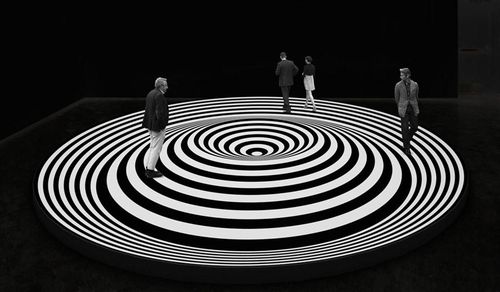
Marina Apollonio, at El Museo del Barrio
James writes:
Few people now remember William Seitz's 1965 MOMA show "The Responsive Eye," but at the time it was one of the original blockbuster museum exhibitions, making Optical Art the style of the moment. It was also far from inclusive. Optical art was truly an international movement, with remarkable work spanning from Latin America through India and Iran. Yet "The Responsive Eye" looked mainly to Anglo-American artists. Now, with hindsight, we can look back to the Optical Art movements of Latin America with fresh eyes thanks to The Illusive Eye, an exhibition on view at El Museo del Barrio through May 21. For more, I spoke with the art critic Juana Libedinsky in Argentina's La Nacion about the new and important perspective "The Illusive Eye" brings to Op.
Cincuenta años atrás, el MoMA organizó una exposición de arte óptico (Op Art) y cinético titulada The Responsive Eye. Los artistas seleccionados habían abandonado el uso naturalista del óleo sobre la tela. Inspirados en la intensidad de las nuevas pinturas acrílicas, apelaron a líneas contrastantes y colores complementarios para acentuar la biomecánica de la percepción. "Los resultados fueron inmediatos -recuerda James Panero, crítico de arte de The Wall Street Journal y director ejecutivo de The New Criterion-. Aunque estaban basadas en más de un siglo de estudios, las obras centellantes y pulsantes requerían poca explicación; la muestra fue un éxito de audiencia y la sensación del momento."
Fifty years ago, the MoMA organized an exhibition of optical art (Op Art) and kinetic art entitled The Responsive Eye. The selected artists had abandoned the naturalism of oil on fabric. Inspired by the intensity of new acrylic paints, they used contrasting lines and complementary colors to accentuate the biomechanics of sight. "The results were immediate" recalls James Panero, art critic of The Wall Street Journal and Executive Editor of The New Criterion. "Although grounded in over a century of study, the flickering, throbbing, pulsating works on view required little explanation. The show set attendance records. It was a sensation."